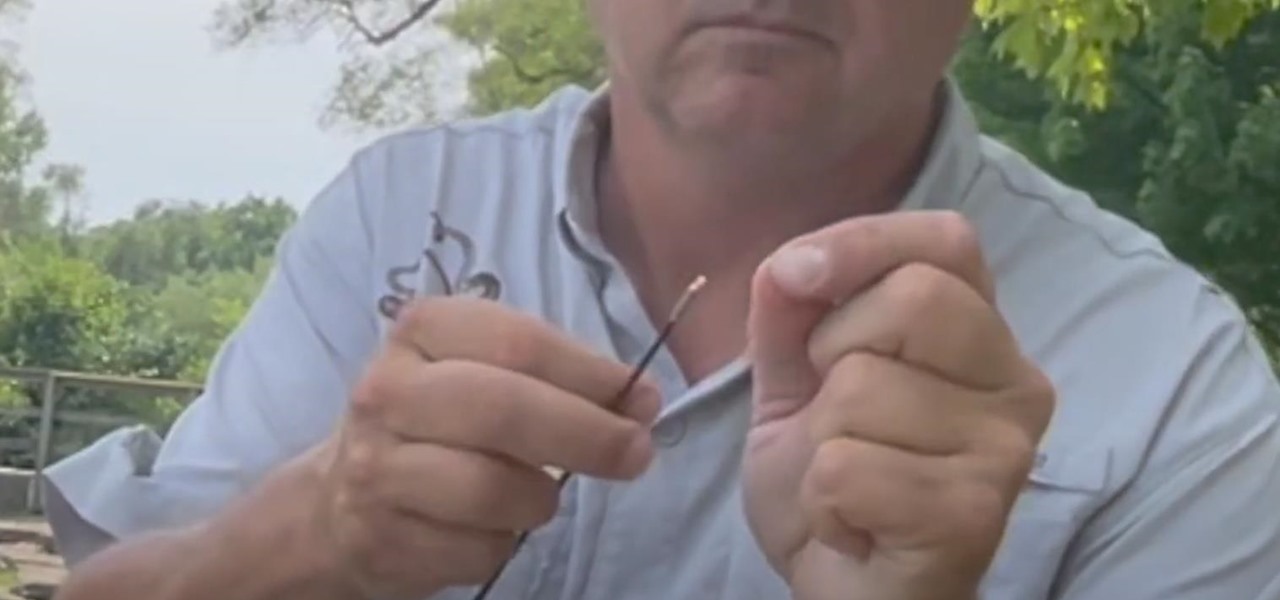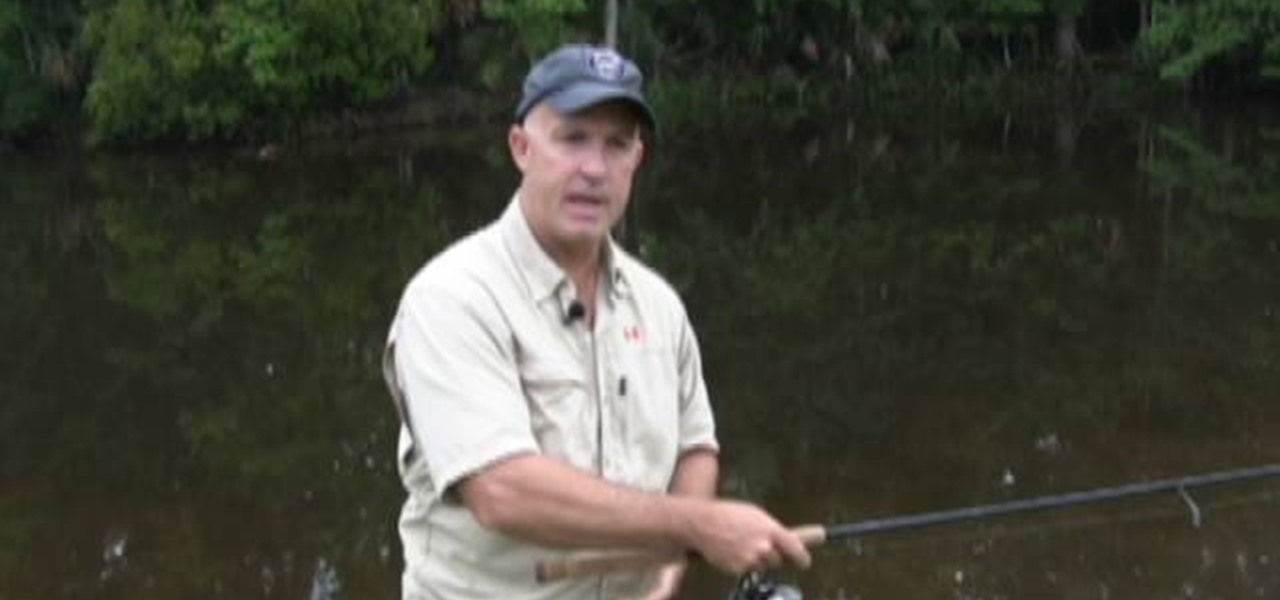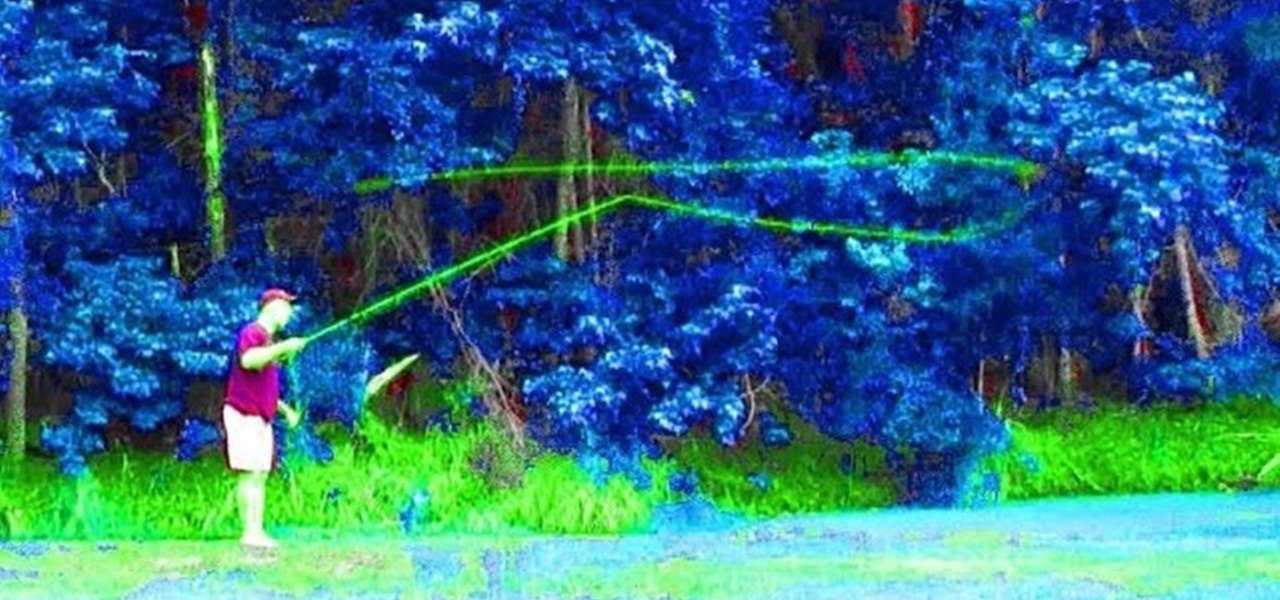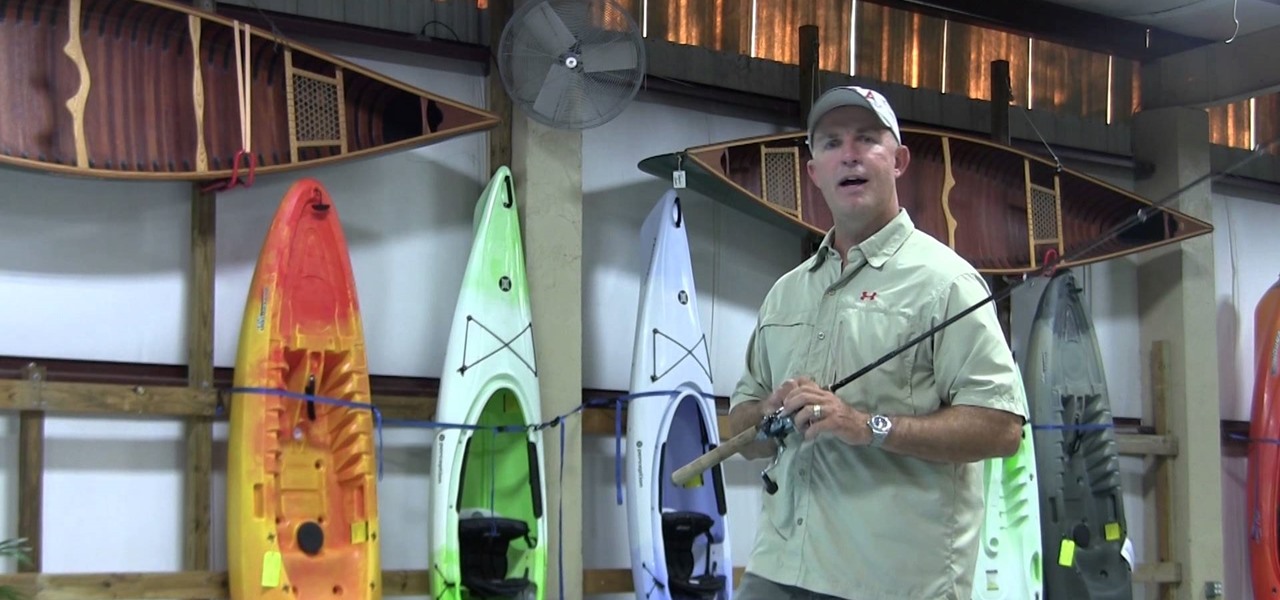Hot Fishing How-Tos

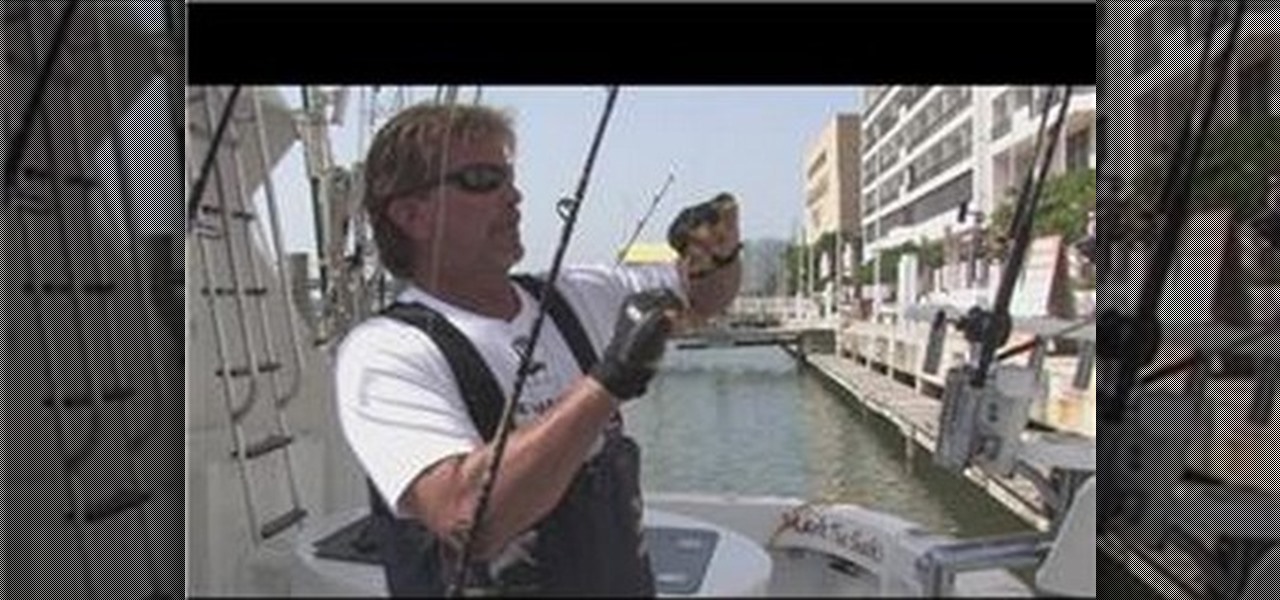
How To: Tie a fishing line for ocean fishing
To begin with you have to pass the line all the way through the eye of the hook and do it crosswise seven or eight times. Run it through the loop once more and then pass it all the way through the main loop of the line. Make certain that your line is wet. Another special way is that you can tie a loop on the line and then craft another loop and then pass it all the way through the eye of the hook and then bind it and cut it off. One more way to create a knot for the live bait is first craft a...
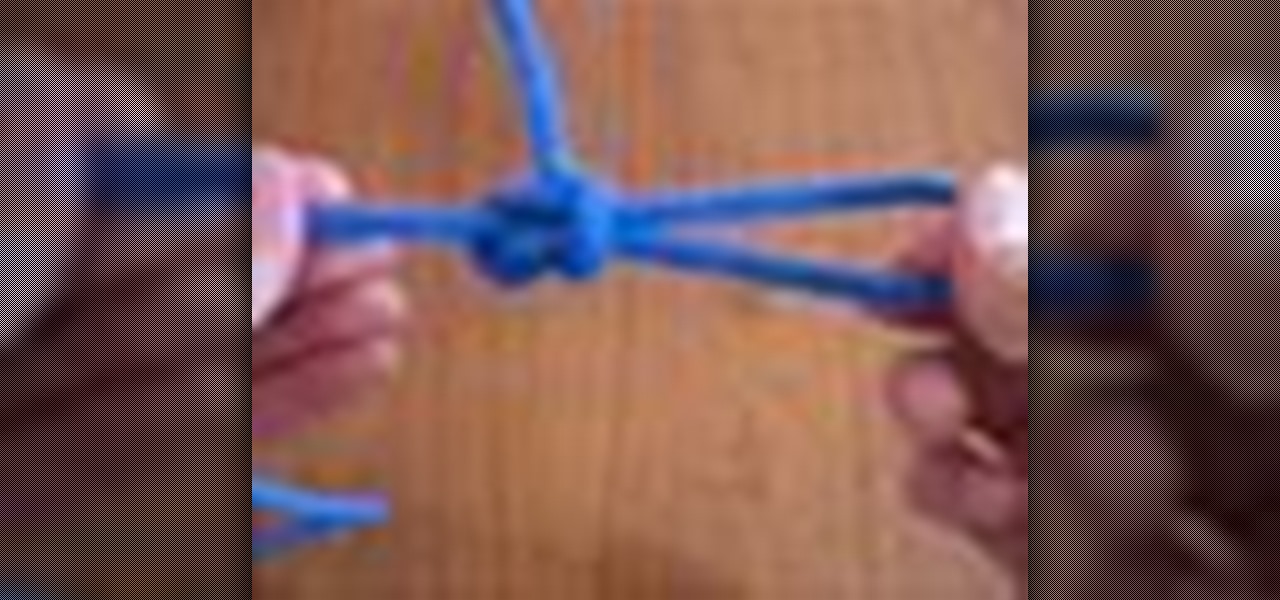
How To: Tie a perfection loop knot
This is a video demonstrating how to tie a perfection loop. This is a loop that is necessary for fishing. It can be using for sinkers and fly fishing. It is good for any purpose where a loop is needed. A loop is made first. The loop is held between the left thumb and index finger. The end of the line is taken and put over the loop. Then switch hands and take the end of the line below the main line, making two loops. Then the end of the line is placed between the two loops. Take the top loop n...
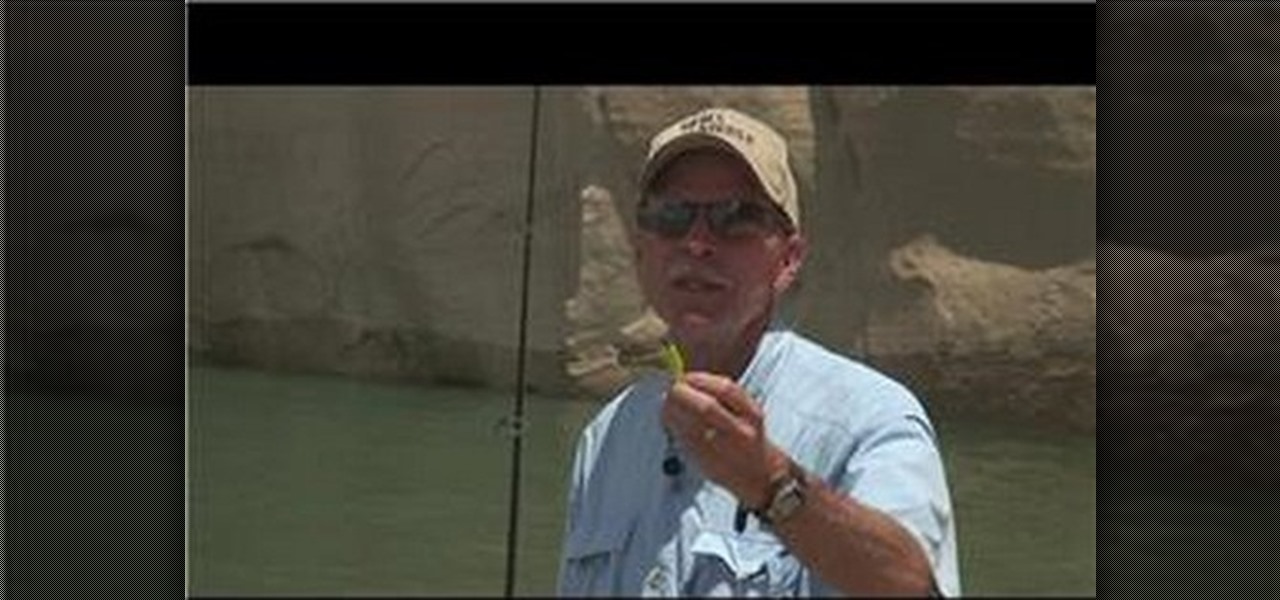
How To: Fish with plastic worms
To fish with a plastic grub or a plastic worm, rig with a lead head so that the lure will go to the bottom and "swim" back to the boat, imitating a crayfish or a baitfish. First, cast your lure out to a likely spot like a rock or a tree or some place that looks like a good habitat for a fish. Let the bait hit bottom because bass like to watch it come down. They will swim over and inspect the lure on the bottom. You can raise your rod to lift the lure up and down or you can reel in the lure sl...

How To: Make a fly fishing leader
Learn how to make a fly fishing leader by following this tutorial. First, the easiest way is to purchase a tapered leader, obviously. However, sometimes as you are fishing this will break and you may not have a backup leader. Your only option in that scenario is to make a new one from your broken leader. Take approximately 18 to 24 inches of the 3X wire and double knot it to the but section that is broken. Then use another wire material to attach for the fly section. To decide what type of ma...
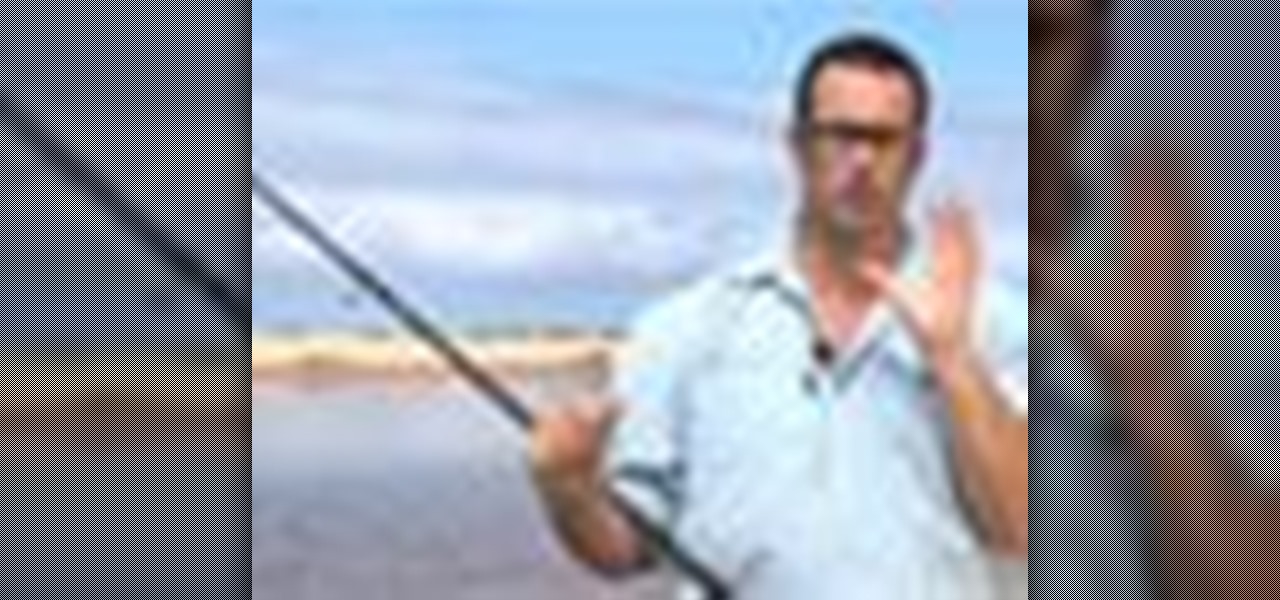
How To: Tie a patanosta knot for your fisihing rig
In this how-to video, you will learn how to tie a patanosta rig for beach fishing. This will be useful for catching fish in the summer. Make sure that the sinker and bait are not too far away from each other. If you cast this out, the casting distance will not be reduced by a circular motion that the bait and sinker will make if tied improperly. First, place only about a foot and a half distance. Form a loop, wrap it around about three times, and pull the hook through the leftover loop. Pull ...

How To: Put a hook on a deep sea fishing pole
In this tutorial from Mark the Shark, viewers are shown how to apply a hook to a fishing pole. One such method is using a Fishermen's knot, and wrapping the hook around the line eight times, and then wetting it with saliva, before it is tightened. Then, the user must make sure than the knot comes all the way down to the hook, to make sure it does not rotate. Next, pliers must be used to eliminate excessive line, and then the line must be searched for crinks, or any imperfections. Mark the Sha...
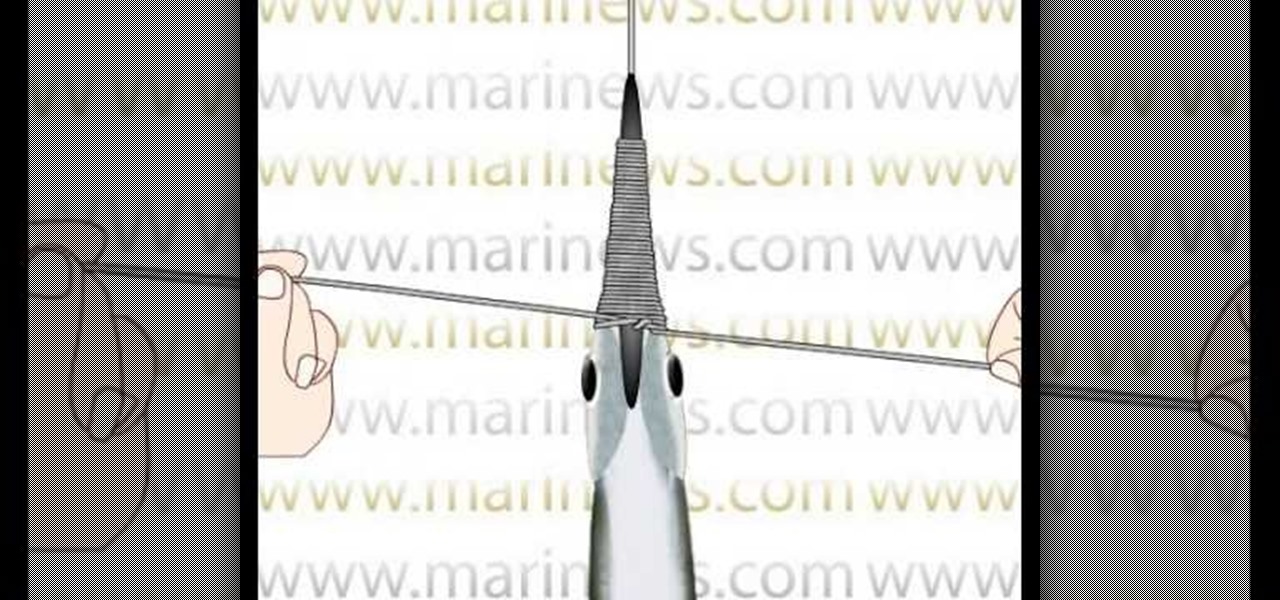
How To: Rig a garfish for fishing swimming bait
So, you've mastered the knot tying process for fishing, and you already know how to catch bait, so now what? You need to put that live bait to good use... this animated tutorial from Marinews will show you how to rig a garfish for fishing swimming bait. Catching bait might just be as hard as baiting fish, but it's all in good fun when you kick back with a brewsky in your hands. You can learn by simply watching the bait rigging animation at a moderate speed, or if need be, click on "learn by s...

How To: Fuse two finshing lines with the blood knot
He explains how to tie a "blood knot" and what the blood knot is used for, which is joining two separated rope/string ends. He demonstrates the knot, which starts by taking the two lines and lining them up one on top of the other, so they are parallel to each other. Then, start winding one end around the other, at least 3 or 4 times. Do the same with the other loose end as well. Then, place the first end through the wound part of the two ropes where you started. You pass the other end through...

How To: Tie the fly fishing line to the backing
In this video tutorial, viewers learn how to tie a fly fishing line to the backing. Users will need a nail knot tool. Put the backing into the tool, leaving about 6 inches sticking out. The wrap the line around the tool 5 times, pushing the loops together. Take the end of the line and run it through the groove of the tool. Put the fly line through the other end about 2-3 inches. Then hold the loops in your hand, remove the tool and pull on the backing to tie it. This video will benefit those ...
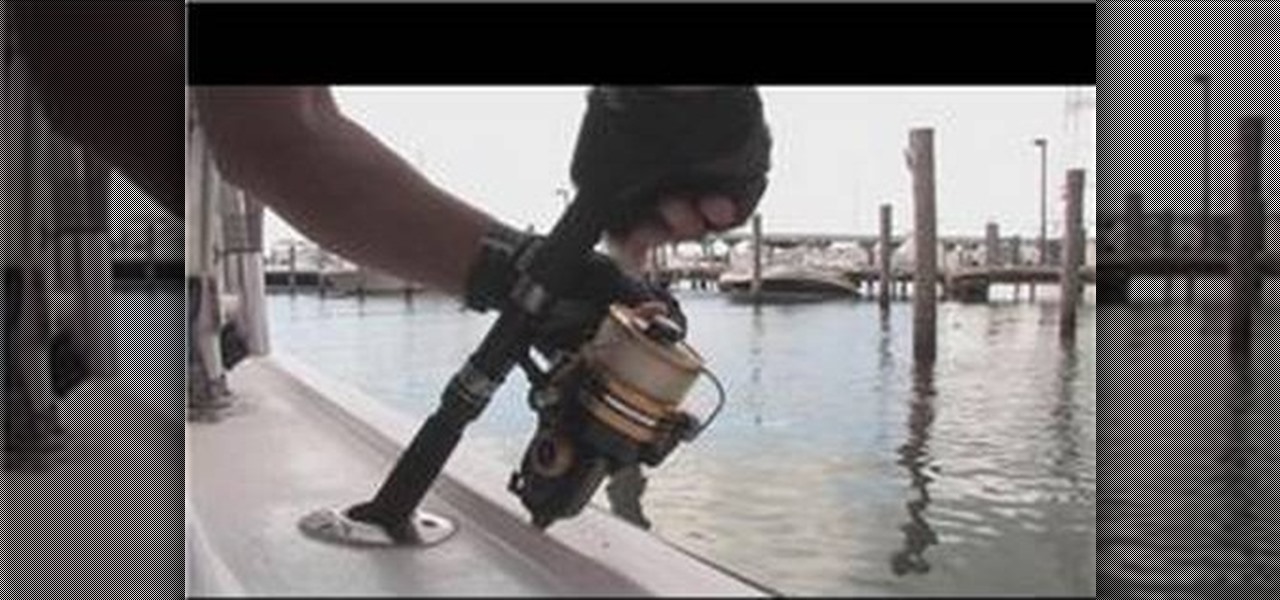
How To: Spool a line on a deep sea spinning reel
This Outdoor Recreation video tutorial shows how to spool a line on a deep sea spinning reel. This video is from marktheshark. First get the end of the line, put it through the guide at the top end of the rod, and then pass the line through all the guides making sure that you don’t miss a guide. Open the bell, go around the spool twice, twist the line six times, put a knot and tighten the knot fully. Cut off the excess. Close the bell and now add line to the spinning reel by rotating the spoo...

How To: Set up a fishing pole for bass fishing
This is a great instructional video on how to set up a fishing pole for bass fishing. If you want to set up a fishing pole for bass fishing, you have to use a 6 1/2-foot, medium-action spinning rod with a medium-sized reel. You can discover why it's important not to overpower a bass fishing setup with help from a commercial fisherman in this video on fishing equipment. First you need to insert the thread into the spool and grab it with your little finger. You have to pull it out now. Tie the ...
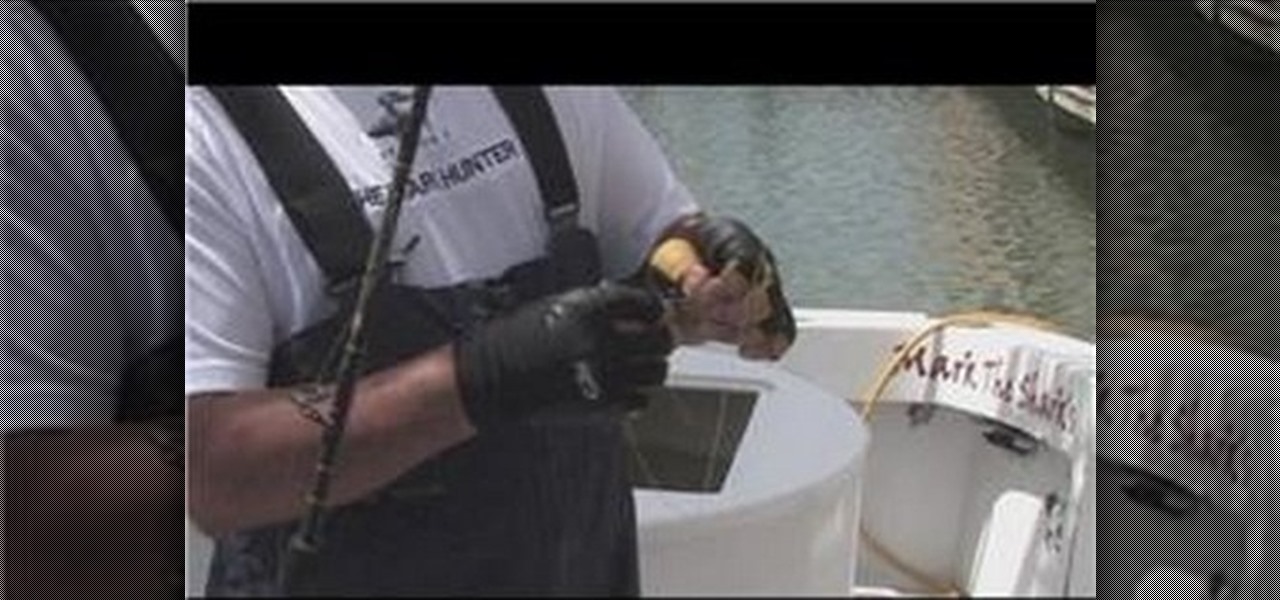
How To: Tie a basic fishing knot
First of all pass the line through the eye of the hook and do it across seven or eight times. Run it through the loop again and then pass it through the main loop of the line. Make sure that your line is wet. Another different way is that you can tie a loop on the line and then make another loop and then pass it through the eye of the hook and then tie it and cut it off. Another way to make a knot for the live bait is first make a loop and then pass it across over three or four times. Now pul...
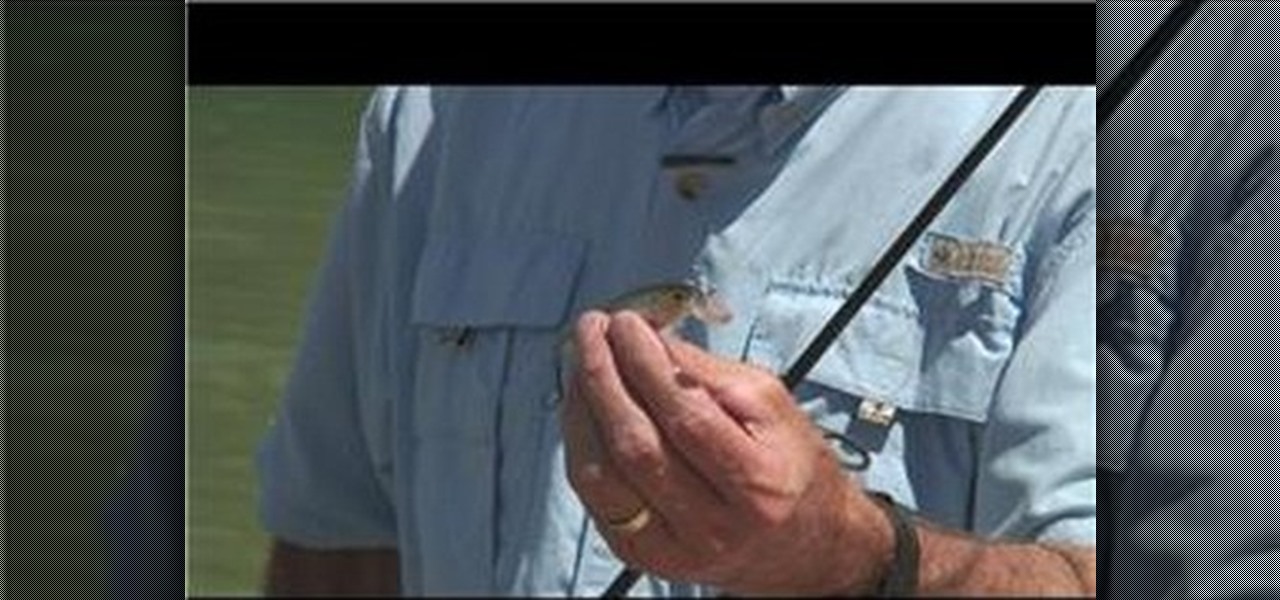
How To: Fish using a jerk bait
One of the most important features on the jerk bait is the front end diving lip which is used to make the lure dive deeper in the water when the jerk bait is pulled by the fishing rod. There is one more very important feature involved in using this jerk bait. It is the "pause" and "jerk" motion of the lure. This action should be performed after the line is fully cast out and fully under the water and all of the slack left in the fishing line is reeled in and gone. The reason for the "pause" i...
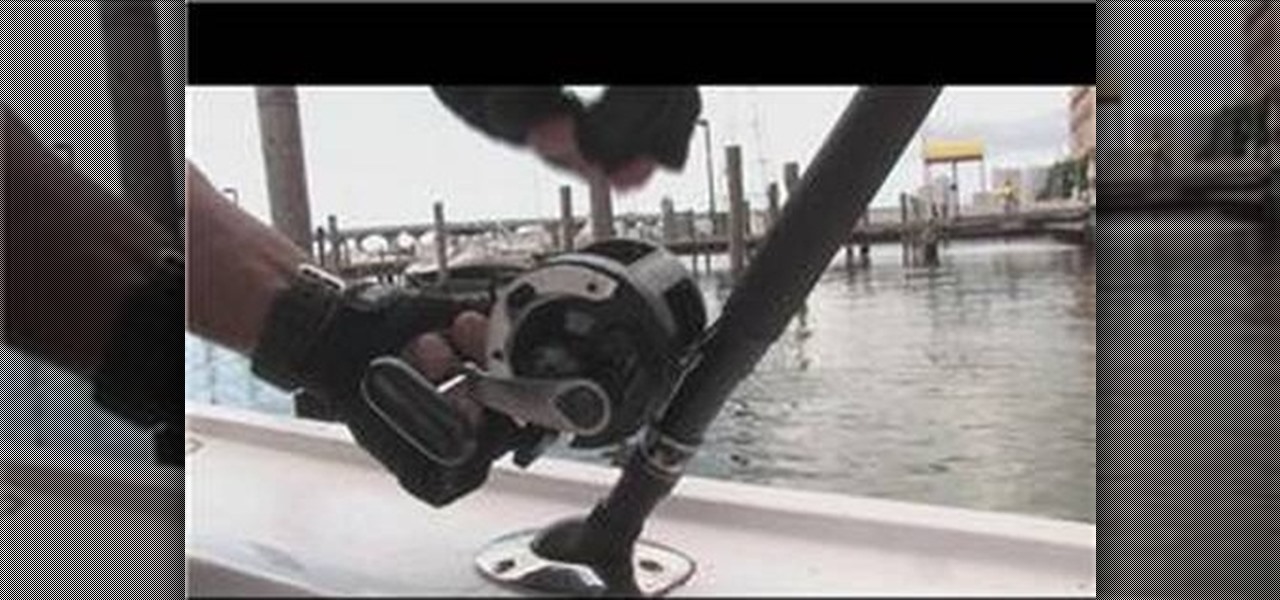
How To: Replace fishing line on a reel for deep sea fishing
Mark the Shark demonstrates how to replace fishing line on a reel for deep sea fishing. First make sure to thread the fishing line into the guide ends and that you don't miss any. Put the rod in the rod holder so that you have two free hands to work with the line. Thread the line twice in the spool and make a knot to hold the line in place. Pull the line tight so it's snug against the reel and snip off the loose ends. Turn the crank and make sure that the line feeds into the spool very evenly...
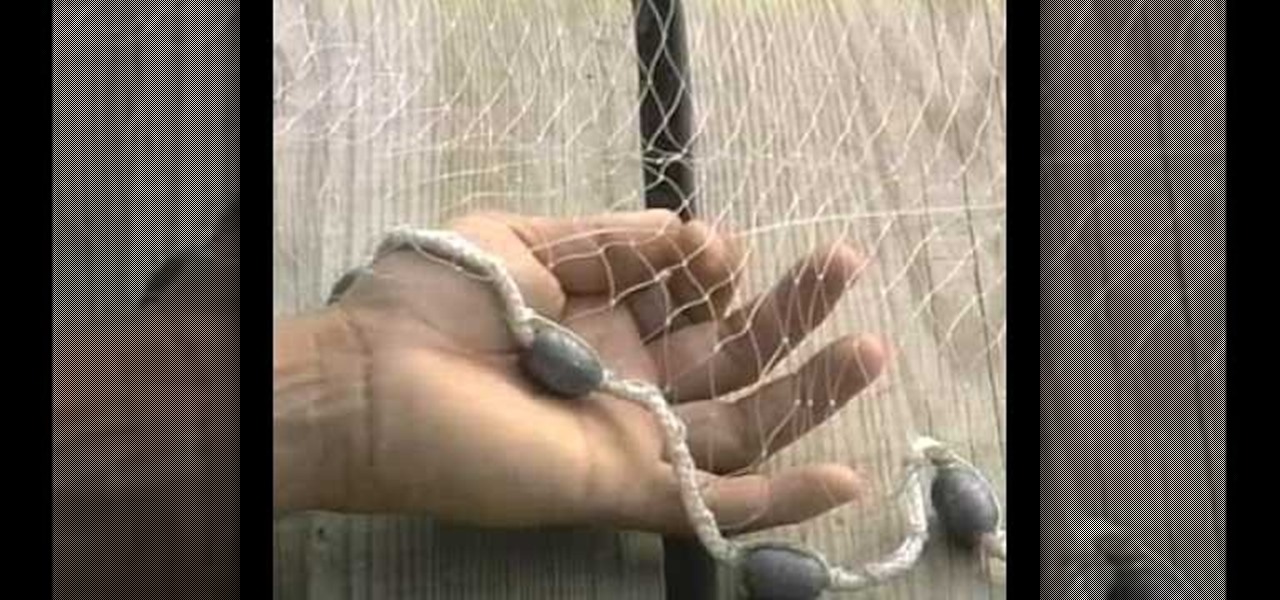
How To: Throw a cast net for live bait
The best way to fish is with live bait, but buying bait can be expensive and it isn't always guaranteed fresh. Once you learn how to cast your own bait you will be able to catch large amounts of bait fish on your own, and cut out the middle man. Happy fishing!
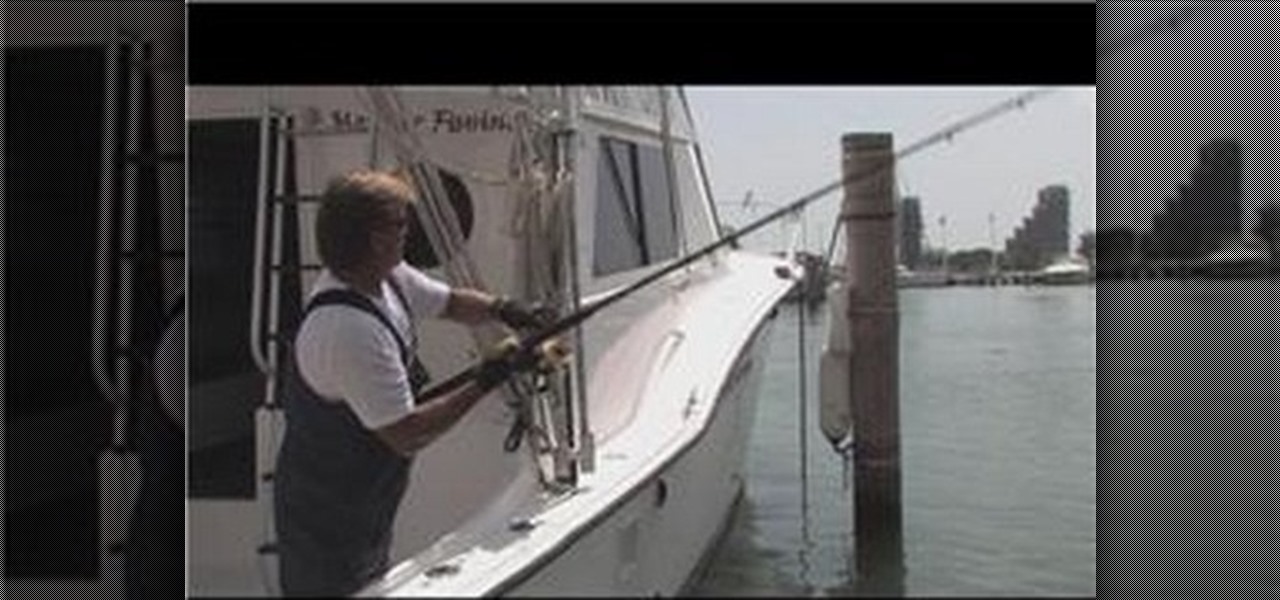
How To: Use a fishing jig
Learn how to use a fishing jig which recreates the motion of a fish swimming in simple steps. First connect the fishing jig to a fishing rod and tie a knot in it. Throw the jig in the water by holding the rod properly in your hand. Control the rod carefully and pump them in slowly. Keep the fish in the line of your reel and slowly bring them in.
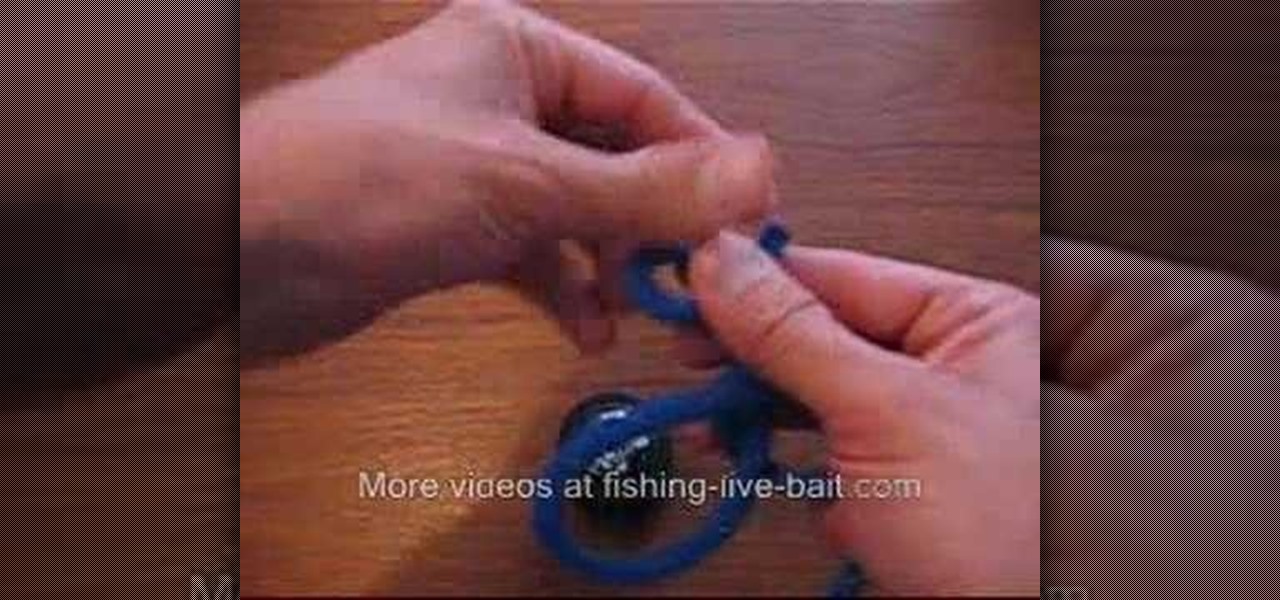
How To: Tie an arbor knot for fishing
This video shows us how to tie an arbor knot for fishing. Here a blue rope is taken to explain how it is done but actually the fishing net is used to tie such knots. The rope is taken and is made a loop, and the line is made to pass through the loop to make the first knot which is actually a very basic knot. Then the rope along with the knot is wind around the reel and the line is made to pass through the knot which was previously done. But the line may come out of the knot so for that, anoth...
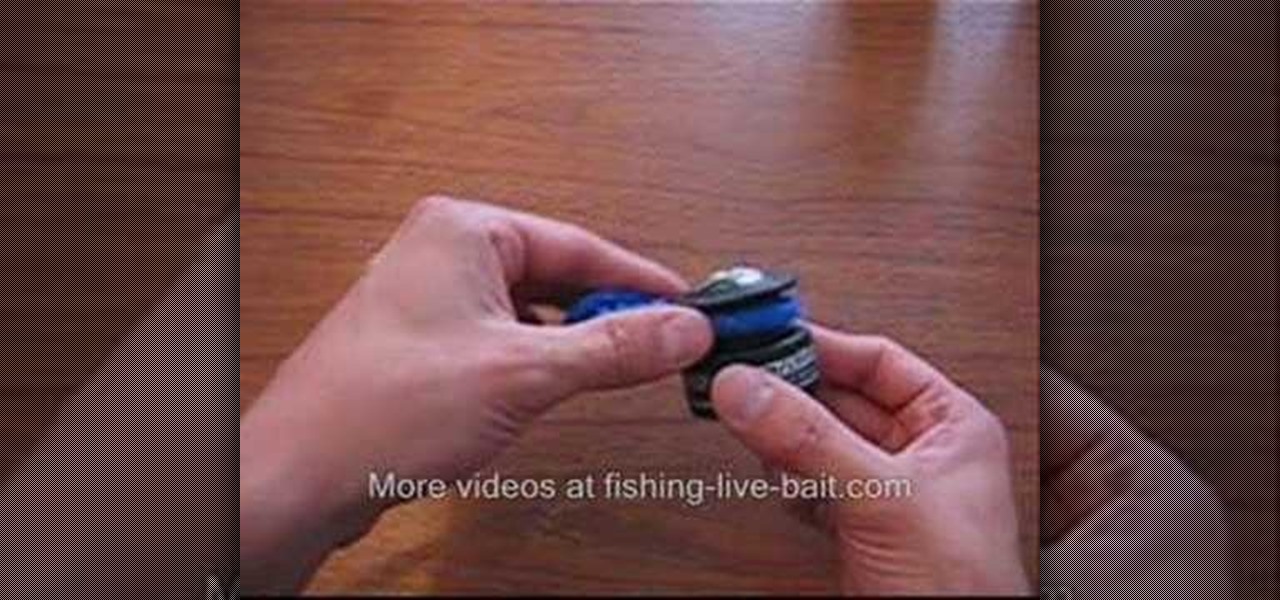
How To: Tie a Uni knot
In this video, you can learn how to tie a uni knot. He uses a snap-hook and a blue rope to demonstrates. He pulls the rope through the hook and makes a loop that crosses over the two pieces of rope. He pulls the rope through the hole six or eight times. Then pull on the hook to tighten the knot. When you pull the rope, the knot slides up to the hook. He explains that the uni knot can be used to loop a fishing line onto a hook or over a reel. It can also be used to tie two lines together makin...
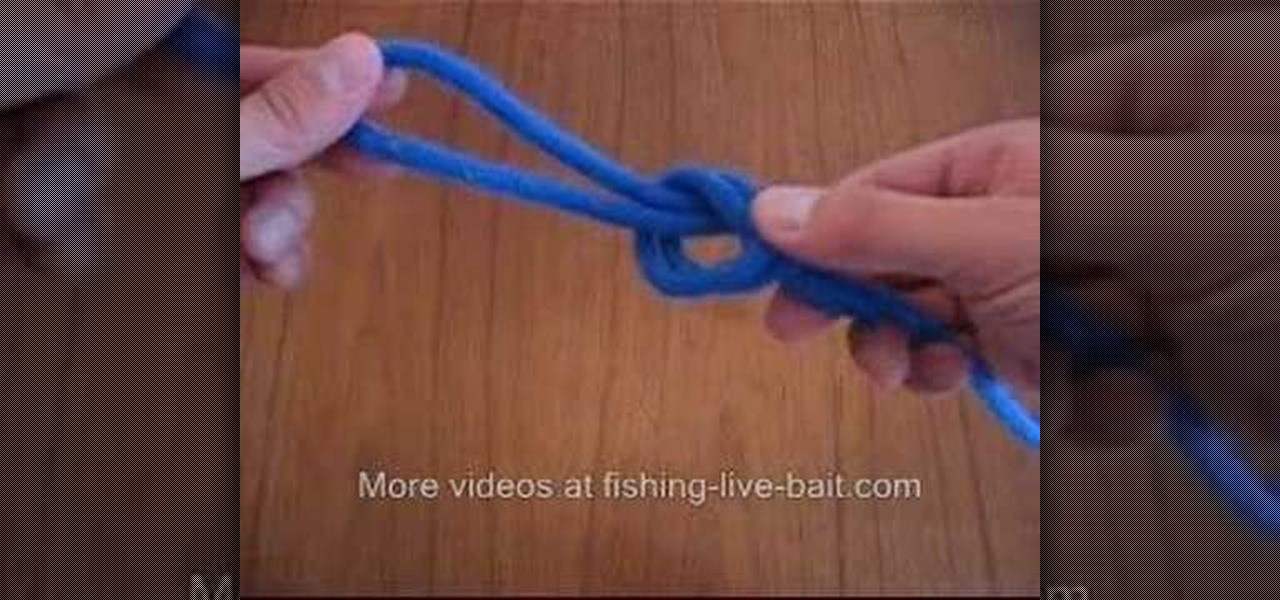
How To: Tie a surgeon's loop
This is a video shows you how to tie a surgeon's loop. You start with a large loop, and treat it as one. Then just tie a normal overhand knot, but instead after that you pull it through once more as shown in the video. Then pull both ends to tie the knot up. This is a very strong knot so it's a very good loop to know. Their website also has much more information on how to tie this and other knots.

How To: Tie a blood knot
This video teaches you how to tie a blood knot which is used to tie two lines together in a very strong knot. Fly fisherman use this knot for making their own fly leaders. Wrap the right line around the left line five times. Take the end of the right line and put it in between the left wrapped line and the back of the right line. Wrap the left line around the right line five times, repeating the earlier procedure. Make sure you bring the line up through the hole that is created in front of th...
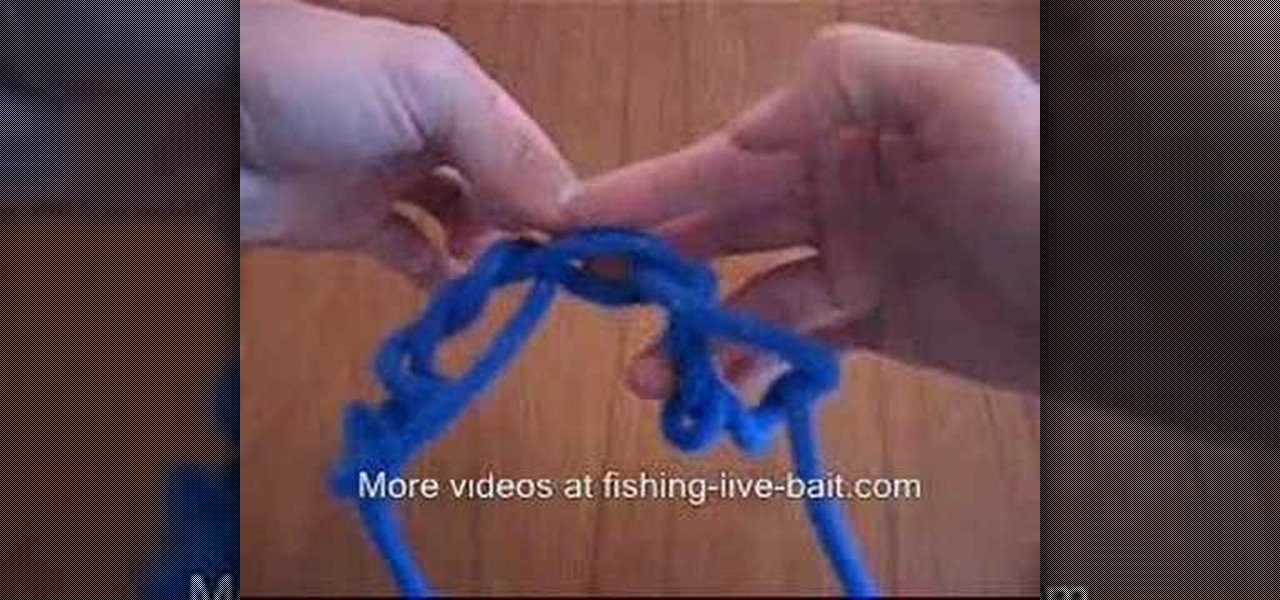
How To: Tie fishing knots
Learn the right way of tying 3 handy fishing knots by watching this video. The first knot shown is the 'Clinch Knot'. One end of the fishing line is passed through the eye of the fishing hook. This end is pulled and wound around the main line about 6 to 8 times. Thereafter, the free end of the line is passed through the small loop formed at the beginning of the winding process. The winds are gently pushed to tighten the knot. The free end is then tucked in to complete the clinch knot. The nex...
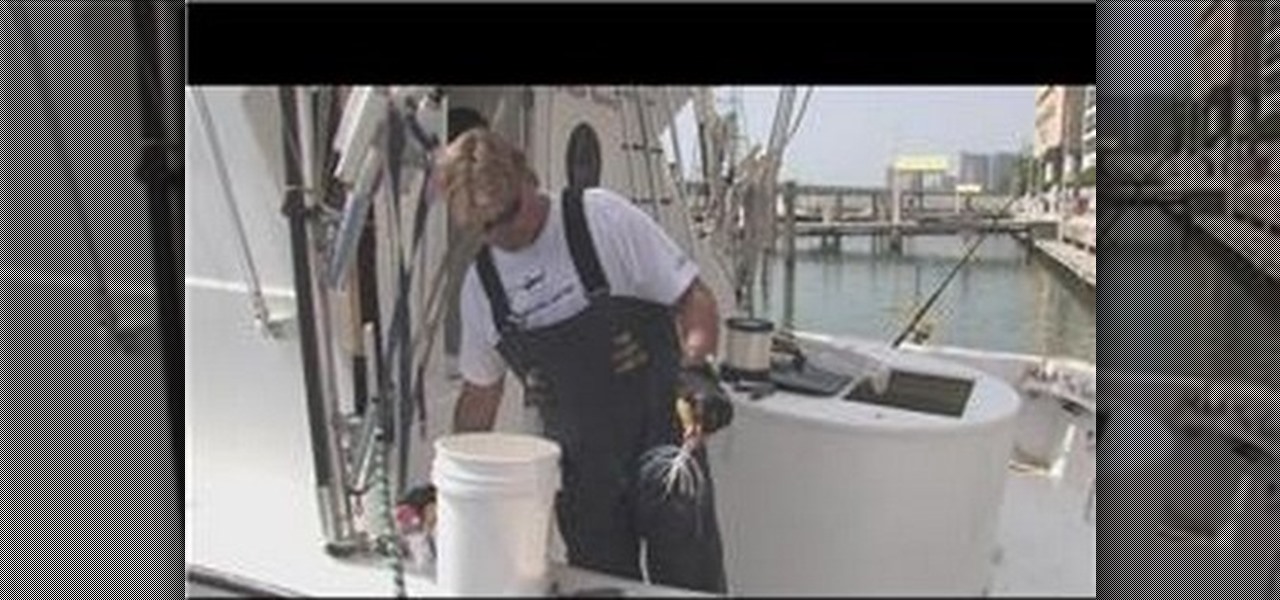
How To: Clean old fishing lures
Learn how to clean old fishing lures by washing away the corrosive salt in it. First add some soap to a bucket and then add some water to it. Take your fishing lure, clean it with the soap water using a sponge and spray some water to wash it. Spray some WD-40 on the rear of the fishing lure. Take your other lure and clean it using the same procedure to the get corrosion off it. Finally pack all the cleaned fishing lures and start for fishing.

How To: Tie a rapala knot
In this instructional fishing video from Fishing-Live-Bait, you will learn how to properly tie The Rapala Knot with the Rapala loop that was invented and recommended by the Rapala brothers, who developed this special type of lure. Using an oversized rope that makes it much easier to see and understand how and what he is doing with the string, the host demonstrates for you how to tie this particular knot in an easy to follow, step-by-step manner.
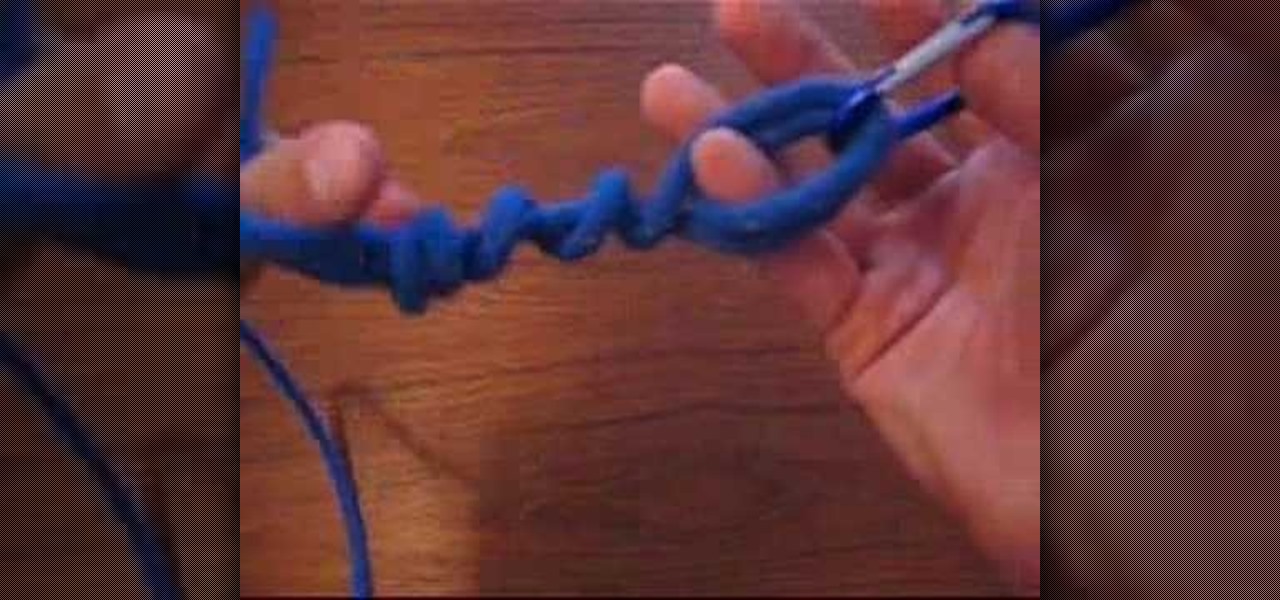
How To: Tie a Trilene knot
The Trilene knot is a multi-purpose knot that can be used in fishing to attach hooks, swivels and lures. This is a great knot because it resists slips and failures.

How To: Tie a dropper loop for fishing
This video teaches how to tie the Dropper Loop fishing knot. The presenter explains the uses of the Dropper Loop, then begins the instructions. First, make a loop in your line, remembering that the size of this loop will affect the size of loop you have when the knot is tied and sizing accordingly. Take the end of the line and make another loop that goes inside of the big loop and then wraps around the line 4 times. Now you have a big loop, and a length of wrapped line with a hole in the midd...
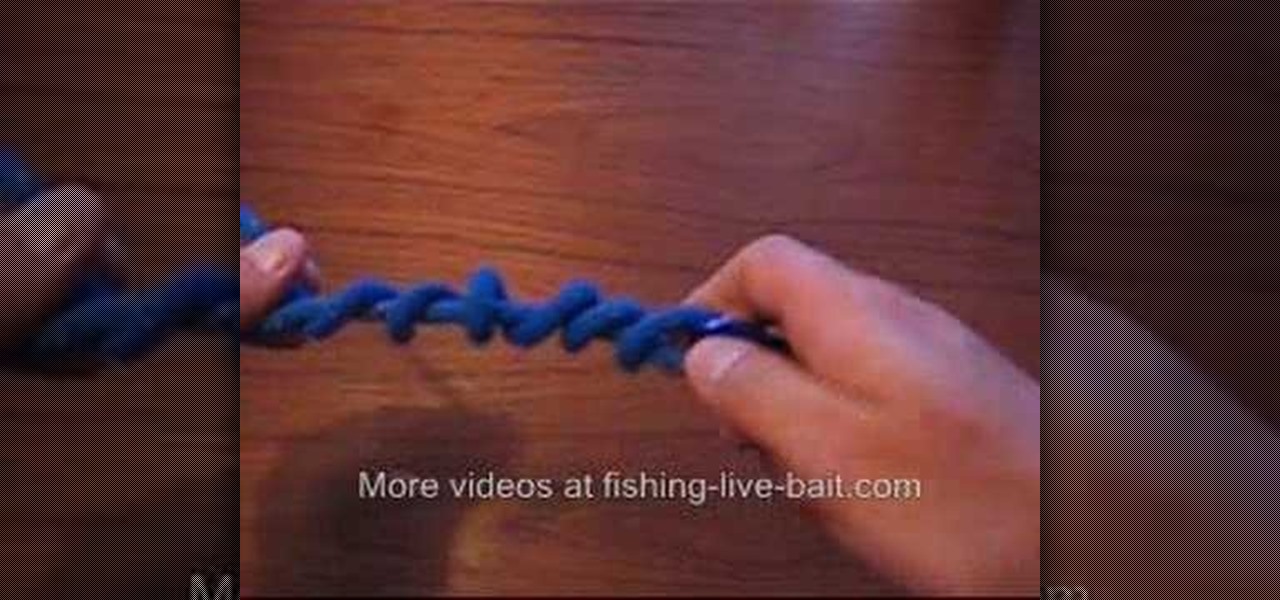
How To: Tie a clinch knot
The Clinch Knot is used to secure your fishing line to your fishing lure. In this video, learn how to tie a secure clinch knot, step by step. You can't fish without a sturdy lure, so watch the video and practice until you master the knot on your own. Once you've got it, attach your bait and you are on your way! Happy fishing!
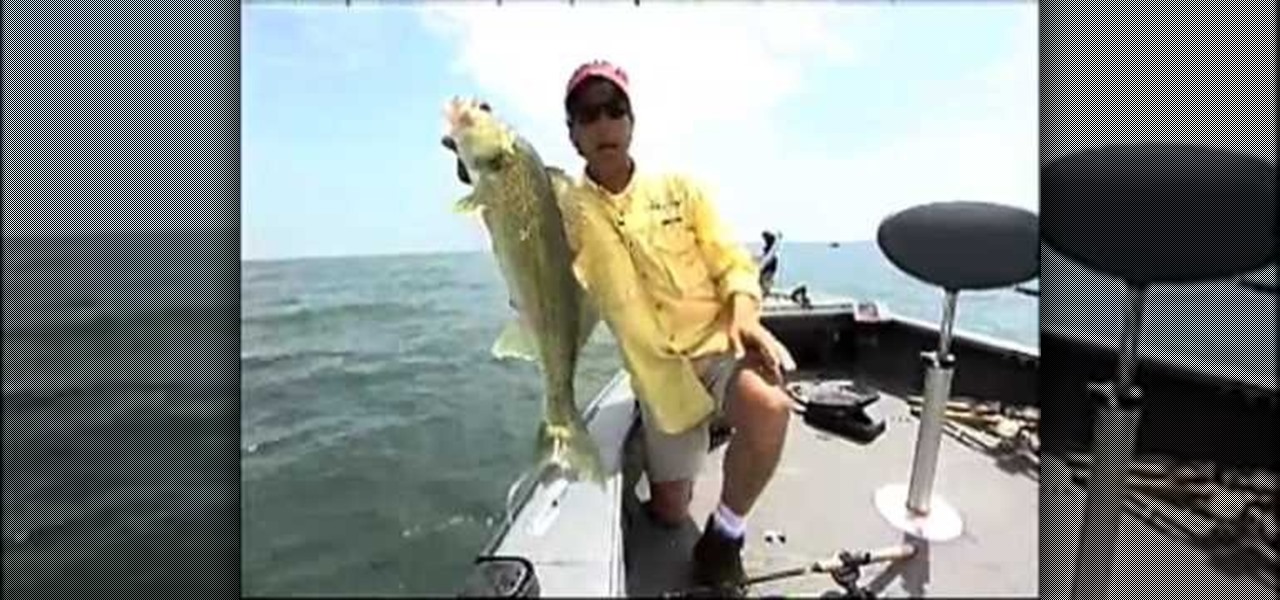
How To: Catch walleyes
Know what walleye eat. Walleye eat smaller fish, such as minnows or shad, so lures that imitate fish, such as spoons or thin-minnow crankbaits are good choices. Walleye also will eat nightcrawlers, insects and leeches, although artificial forms of these baits usually are not as productive.

How To: Use a jerkbait stinger hook for bass fishing
If you want to catch more bass this spring, then you need to fish soft plastic jerk baits. They drive bass wild. Wade Bourne, host of Wade's World on MyOutdoorTV, shows you how to use a jerkbait stinger hook.

How To: Tune up a crankbait for a straight path
How many times have you been on the water and you've cast off a crankbait? You pick up the crankbait rod and make a cast, start your retrieve and your bait runs off to the side. Tuning will keep it straight. Wade Bourne, host of Wade's World on MyOutdoorTV, shows you how to tune up a crankbait.

How To: Fish for bluegill with a fly rod and popping bugs
Nothing is more fun that fly fishing with popping bug for panfish. With popping bugs, you can get bite after bite from little bass. Wade Bourne, host of Wade's World on MyOutdoorTV, shows you how to fish for bluegill and panfish using a fly rod and popping bugs.

How To: Use a follow-up lure when bass fishing
There's no more exciting ways to fish for bass than top water. There's a big explosion with a bass hooked up. Wade Bourne, host of Wade's World on MyOutdoorTV, shows you how to use a follow-up lure when you've missed on a big bass.
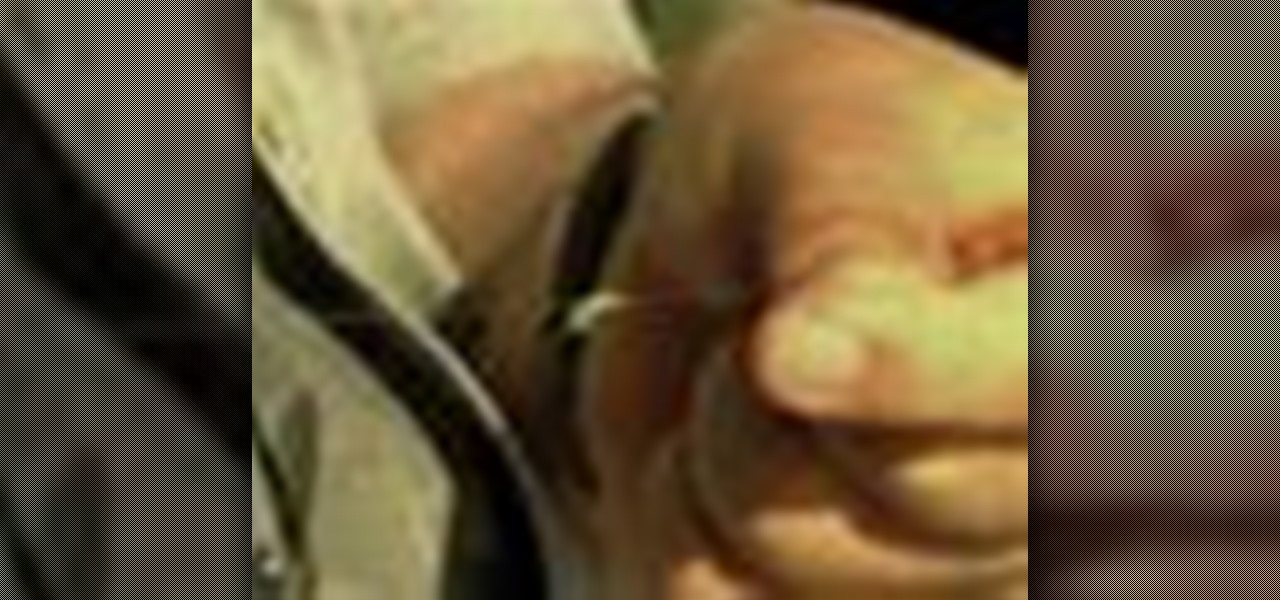
How To: Use a slip bobber rig when panfishing
To catch a lot of bluegill fish, the best way is with a slip float rig. The weight is all at the bottom of the line. Wade Bourne, host of Wade's World on MyOutdoorTV, shows you how to use a slip bobber rig when panfishing.

How To: Fish for bluegill in bream beds
Nothing is better than getting on a bream bed. You'll catch bluefish one after another. Wade Bourne, host of Wade's World on MyOutdoorTV, shows you how to fish for bluegill and panfish in bream beds.

How To: Prepare for sushi and sashimi grade bluefin tuna
To prepare the tuna, start by cutting the jugular to bleed the tuna out. Cut right at the top of the gill plate and cut up toward the eyes. Do this on both sides of the tuna. Then, cut a circle around the anus to free up the guts. Go back to the gill plate and cut the membrane in the gut cavity on both sides and, with one swift pull, the head and guts come out of the tuna. Then, you will pack the core very tightly with ice to keep the core cool. It is now ready to go on the table for sushi.
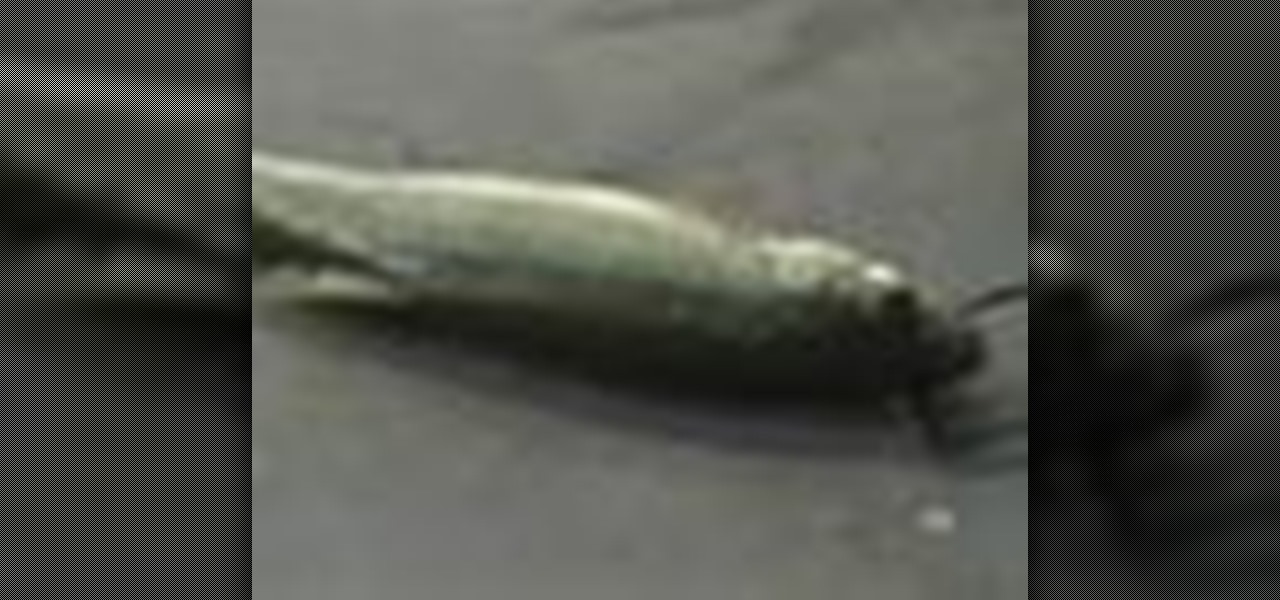
How To: Bait a fishing hook depending on your bait
Taking up fishing anytime soon? The first thing you'll need to learn is how to bait a hook. Different types of bait require different methods of getting them onto the hook. Follow these steps.
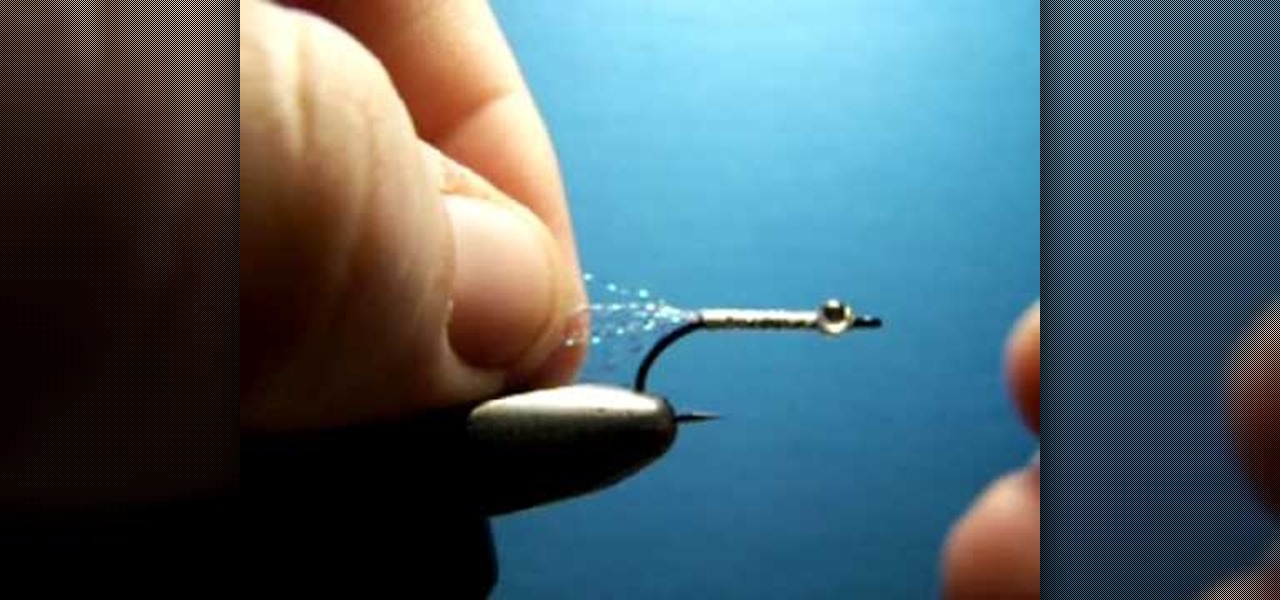
How To: Tie the Plasti Dip Fry
Flashback Max from Alaskaflyfish.net demonstrates how to tie an odd-looking little thing called the Plasti Dip fry. Plasti Dip is a product that can be used to make a rubbery surface. It doesn't run like epoxy, and sets up quickly. As Max puts it, "Dead-drift that puppy, and see what ya get!"
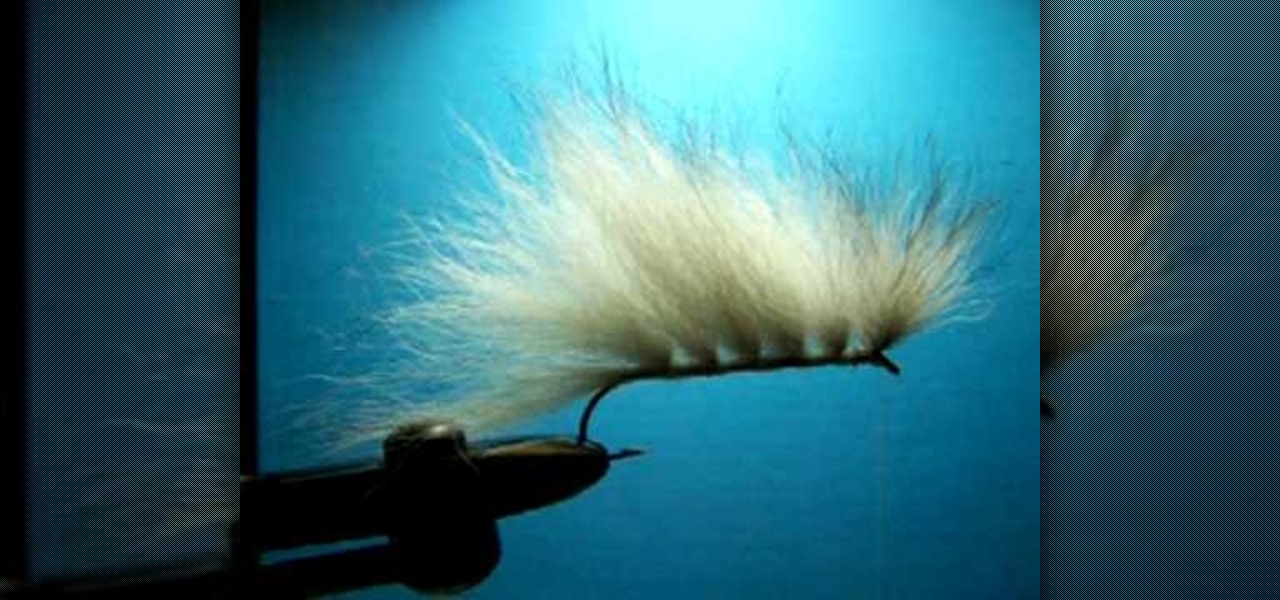
How To: Tie the Aztec fly
Alaskaflyfish.net's Flashback Max demonstrates how to tie an interesting and unusual fly. Max uses foxtail in the video, but artificial fibers can also be used. It's an experimental model - untried at the time the video was posted - but you're invited to give it a try in the field and see what sort of results you get.

How To: Tie the woolhead sculpin pattern
Flashback Max from Alaskaflyfish.net demonstrates how to tie the Woolhead Sculpin. There are many sculpin patterns around - muddler minnow, etc. - but this is one of the simpler methods, using sheep's wool. It's not a pretty thing, but they swim well and they'll be popular with the fish.

How To: Tie the "big, black and ugly" fly
In this video tutorial, Flashback Max from Alaskaflyfish.net shows you how to make what he calls the "big, black and ugly" fly. It's an articulated leech fly, made from materials like rabbit fur, feathers and a big mosquito hook. It may not be pretty, but the fish will still like it fine.
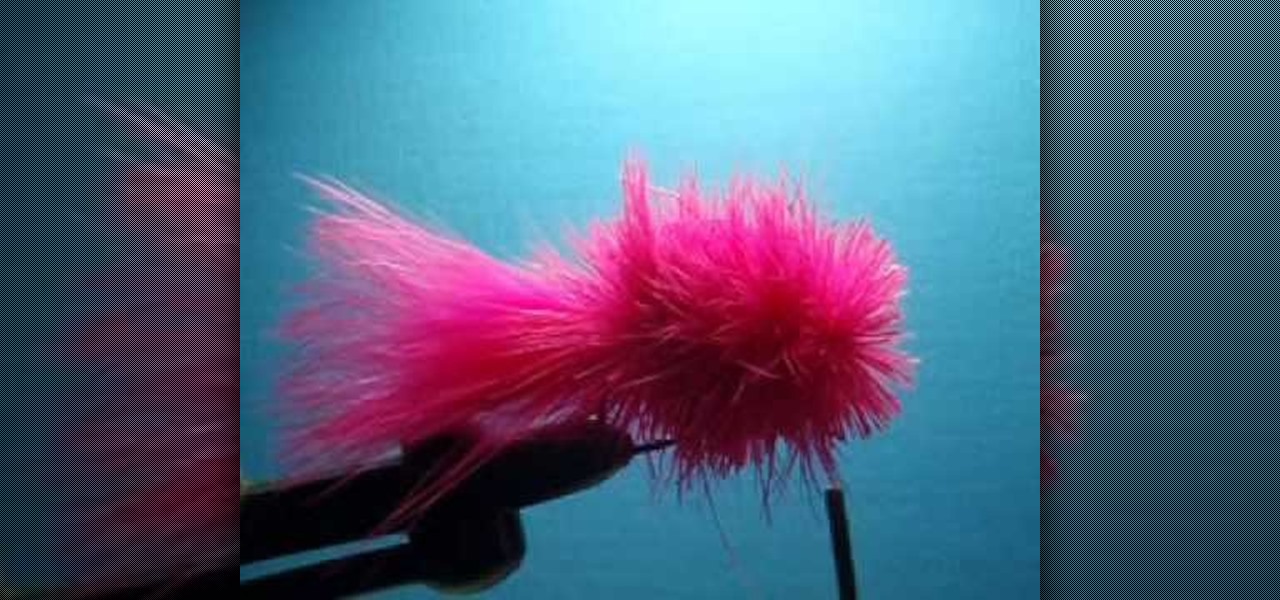
How To: Tie the "pink wog" fly
The pink wog (also known as the techno wog) is a silly-looking fly that gets the job done. Designed to float on the surface, it attracts silvers and other fish. The supplies are rather exotic: a marabou tail, deer hair dyed pink, and more. It's also a very messy fly to make, and you need to take extra care when putting it together.



